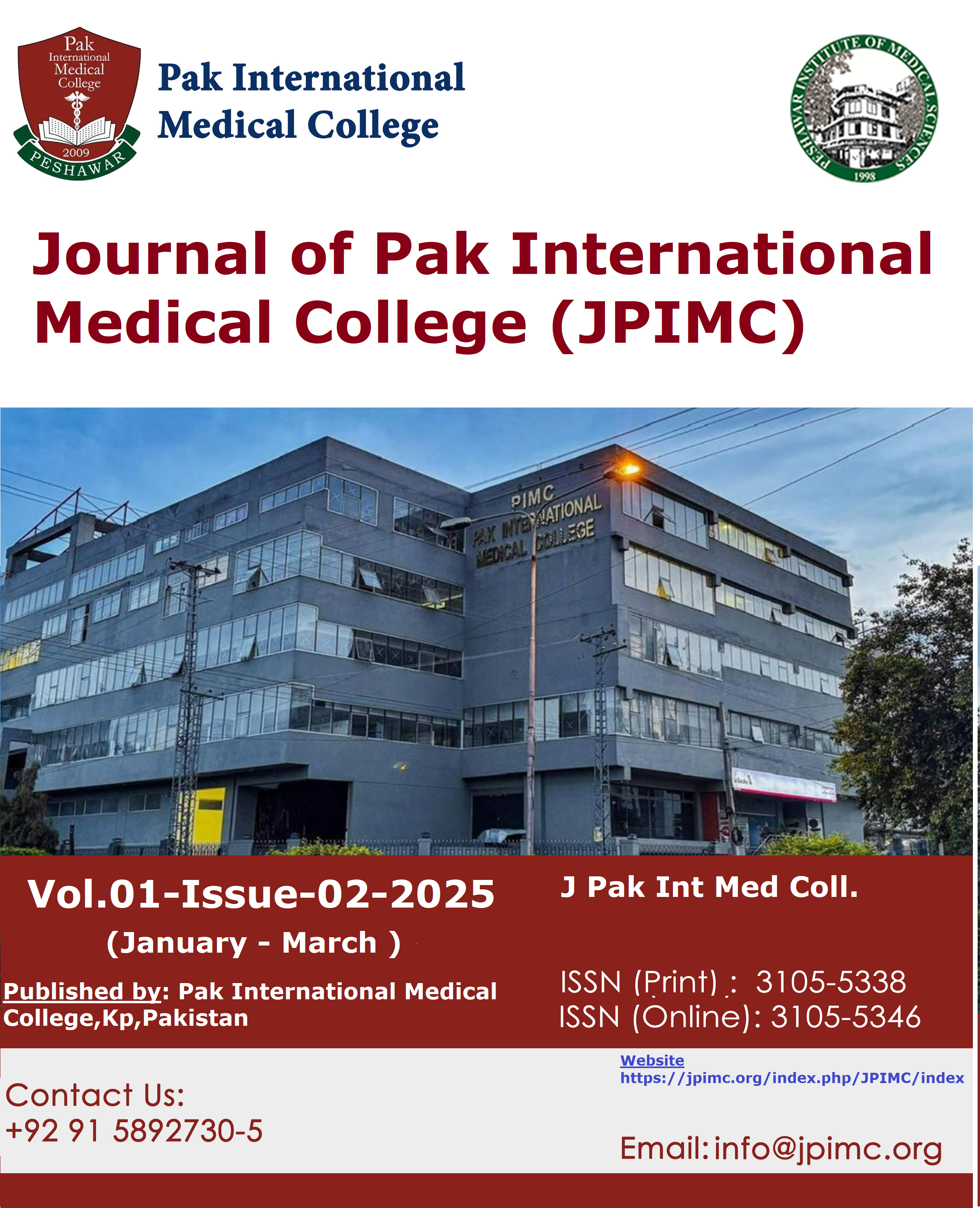Prevalence Of Iron Deficiency Anemia In Patients With Chronic Infections A Focus On Malaria And Typhoid Patients
Original Article
DOI:
https://doi.org/10.64911/c4bccp52Keywords:
Iron deficiency anemia, malaria, typhoid, prevalenceAbstract
Background: iron deficiency anemia exists as a global norm especially in developing nations that face endemic conditions of malaria and typhoid infections. The infections lead to anemia development by three mechanisms: iron sequestration during inflammation, losses from the gastrointestinal system, and hemolysis. The assessment of these infection-linkages holds essential importance for patient care improvement. Outcomes.
Objectives: To find the iron deficiency anemia in malarial and typhoid patients while investigating blood data similarities and differences between these patient groups.
Methodology: 150 patients who received diagnoses of malaria or typhoid were sampled through a non-probability method. The clinical diagnosis of malaria used peripheral smear/rapid diagnostic tests together with the blood culture/Widal test for typhoid diagnosis. The study team analyzed four key blood tests consisting of hemoglobin combined with serum iron and ferritin and MCV. The p-values below 0.05 indicated statistical significance through SPSS version 20.0 processing.
Results: Mean age 31.4 ± 12.6 years. Study revealed iron deficiency anemia occurred in 61.3% of patients while the malaria group presented this condition at a higher rate (67.1%) than the typhoid group (54.7%) (p = 0.041). Malaria was diagnosed in 82 patients among 50 selected patients alongside 68 patients receiving the typhoid fever diagnosis. The study participants had The serum ferritin mean levels for malaria patients measured 9.8 ± 3.2 ng/mL but typhoid patients showed 15.2 ± 4.7 ng/mL which was statistically different (p < 0.01).
Conclusion: IDA is more common among patients with chronic infections but people with malaria develop IDA more frequently than typhoid patients. Immediate diagnosis and comprehensive treatment programs that include iron supplementation would prevent morbidity because of anemia while also improving patient outcomes.
Downloads
Published
Issue
Section
License

This work is licensed under a Creative Commons Attribution-NonCommercial 4.0 International License.










